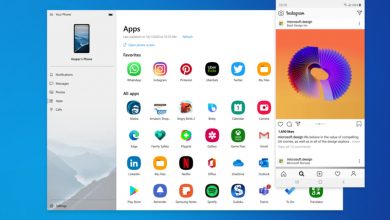How is Flutter Setting the Trend for Mobile App development in 2022

One of the most popular cross-platform mobile app development toolkit/frameworks in the market now, Flutter carries multiple benefits for mobile app development across enterprise scales. Here are the reasons why Flutter is setting the trend for mobile app development in 2022-
1. Open Source
Flutter is open-source and sports features like easy issue posting, wider access to documentation, and a vibrant community backing it. The open-source nature of Flutter enables programmers to easily utilize Flutter’s significant capabilities that are at par with the efficiency and productivity demand levels of enterprise mobile app development.
2. Single Codebase
Flutter is a cross-platform framework that allows developers to write once and deploy everywhere. A single Flutter app version will run as smoothly on iOS as it would run on Android. The direct result of this is that costs and efforts are immediately cut in half compared to a native framework.
3. Dart Programming Language
Flutter uses Dart, which is an object-oriented programming language. Dart sports a rich library, effective GC, robust typing, and asynchronous awaits. Dart is similar to Java, given that it incorporates popular features originally from other frameworks. Sporting a relative programming style, developers can complete their tasks a lot faster with Dart.
5. Hot Reload and Development
In addition to renditions of the best features of the top frameworks and toolkits around, Flutter also sports some unique functionalities, foremost of which is the Hot Reload that allows developers to rapidly and easily build UIs, add features, and even fix bugs in near real-time. This greatly enhances overall developer productivity while reducing mobile app development costs.
6. Native App Performance
Given that Flutter uses Dart, which is simple, fast, and capable of compiling native code, Flutter mobile app development greatly enhances the applications’ performance across platforms and devices. Tech Community
Flutter has a vibrant community of developers that back the framework while consistently adding elements centered on further enhancing Flutter’s capabilities. The Flutter community is welcoming and supportive to newbies, resulting in an even larger and more diverse group of people contributing to Flutter.
7. Attracts Investors
Flutter makes it easy to develop an MVP (minimum viable product) that displays the features and functionalities of the app being created. MVPs created with Flutter are cross-platform compatible with invigorating UX. This, in turn, attracts investors resulting in enhanced cash flows to fund further development.
8. Requires Less Testing
Testing commonly involves compatibility checks on different platforms, but with Flutter, apps run seamlessly across platforms. This implies that if a Flutter app runs well on Android, it will run equally well on iOS or Windows, resulting in massive cost efficiencies.
9. Own Rendering Engine
Flutter sports a high-performance cross-platform rendering engine called Skia to render apps built on it onto platform canvases. Thanks to Skia, the UI built in Flutter can be staged across platforms and device form factors. With Skia, the developer does not need to adjust UIs for platform transfers, thus simplifying the overall development process.
10. Platform-Specific Logic
In addition to UIs, Flutter can utilize platform-specific features such as GPS, Bluetooth, sensor data, access credentials, accelerometers, etc. All these features and more are available in Flutter through a ready-to-use plugin by Google.
11. Internationalization and accessibility
Internationalization, which means developing versions of your app that cater to specific language users and geo-locations, is usually done after the app is produced. This can many a time cause issues and discrepancies. With Flutter, the developer has all the tools he needs to make this process simplistic and effective while (and this is the cherry on top of the cake) incorporating it directly in the development process. Flutter also sports enhanced access levels and legibility with customizable font sizes, automated screen readers, and high contrast visuals as part of its original build.
Why Developers Choose Flutter for Mobile App Development
1. Easy to Setup
In any case, amateurs will find developing Flutter applications much easier. The framework comes with extensive documentation to help developers get started on their project. The documentation is comprehensive, allowing developers to identify any potential problems they may encounter during the project.
2. Requires Minimal Coding
Flutter, as previously said, allows you to create cross-platform apps with a single codebase. It also makes use of the Dart programming language, which focuses on comfort and ease of usage. It uses C-style punctuation and may be compiled into JavaScript code using a JIT compiler.
3. Widgets that Can be Customized
Widgets are self-configurable UI elements that make up the entire graphical interface. When you work with Flutter, you approach all of the requirements for developing a diverse application. Dart allows you to add navigation, actions, and widgets.
4. Rapid Development
The single codebase allows you to quickly put together an application. You can quickly develop a cross-platform application that works. Flutter also has a hot reload feature that allows you to study applications quickly.
The testing load requirements for Flutter are minimal. The testing time and effort are significantly reduced because you can construct two unique local flexible apps with a single system.
Flutter is the appropriate structure for you whether you’re a startup, a businessperson, or a large-scale company that needs to develop a diverse application quickly.
5. A Shorter Time-To-Market
A faster time-to-market can help you get to your target clients before your competition, gather feedback quickly, and update your product to meet their needs.
Because Flutter application development and testing consume less time and are asset accelerated, you can get your app to market faster. As a result, you can get a significant advantage over your competition, close more transactions, and increase the value of your company.
6. Improved Performance
The performance of Flutter is a key reason why diverse application developers like it. Let’s compare Flutter to its closest competitor, React Native, to better understand how well it performs.
As a result, a scaffold is intended to establish a connection between local modules. This connection is both beneficial and yet, time-consuming.
Flutter, on the other hand, collects everything. applications are faster than React Native-based apps and locally developed apps for specific platforms thanks to this technology.
Flutter will most likely be the development platform of choice for flexible application developers in the future, because cutting-edge customers value speed and convenience above all else.
7. Integration with Firebase
Integration with Firebase is an underappreciated benefit of using Flutter that many businesses and developers ignore. Firebase’s administrations, such as data sets, investigation, crash notifying, bug tracking, and data transfers and communication, might benefit developers.
8. Ideal for the MVP
The minimal viable product (MVP) also receives sufficient approval to move further with the product development process. The importance of MVP is growing as more programming development companies adopt the Agile methodology.
Conclusion
So there you have it, all the reasons why Flutter app development services are the future of mobile app development. These benefits are the reason why Flutter is rapidly gaining in popularity and implementation. We hope that this data helps you in making an information-driven decision for your mobile app development initiative.
Hire Flutter developers to be at your service for superlative Flutter mobile app development, completed well within fiscal and temporal budgets while setting quality, efficiency, and utility benchmarks. We trust that this article proves informative. Until next time, Happy developing!





